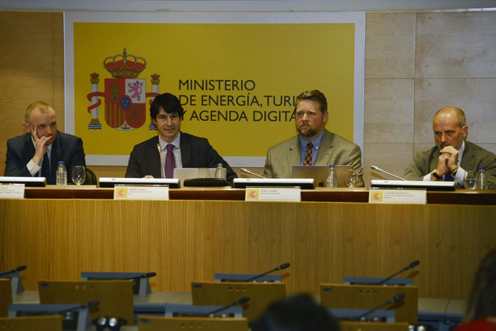Following the reports from MIT and Harvard University
Government will not re-open Castor gas storage facility
News - 2017.5.3
In light of these reports, the government has decided that the Castor gas storage facility should not re-commence operations. Henceforth, studies will be undertaken to decide what to do with this facility, situated off the coast of Vinaroz (Castellón).
At a press briefing held on Wednesday morning, the State Secretary for Energy, Daniel Navia, Professors Rubén Juanes (MIT) and John H. Shaw (Harvard University), and the Director of Infrastructure at Enagás, Claudio Rodríguez, explained the main conclusions of the reports.
The studies, initially commissioned by the government, comply with the requirements contained in the 2014 Royal Decree-Law. They began in October 2015 and were carried out by a group of seven professors from MIT and Harvard University, specialised in the fields of geo-mechanics, seismology and structural geology.
This was an exhaustive post mortem study that analysed the origin of induced seismicity during the injection of gas in the Castor storage facility in 2013. New paradigms were included in this study that integrate geological and geo-mechanical models with the analysis of seismicity data.
According to the studies, the localisation of the earthquakes coincides with the region of the Amposta fault line and with various ramifications of this and concludes that these fault lines were put under stress as a result of gas injections.
The report points out that it would not have been possible to reach these conclusions with the information available and through studies carried out with standard methodology prior to injecting gas.
Background
On 16 May 2008, Escal UGS was granted the operating concession for the underground storage of Castor natural gas. The project consisted of the conversion of the abandoned Amposta oil field into the underground storage of natural gas to tackle the projected needs of the gas system at that time.
In 2010, well drilling commenced to inject/extract gas. On 5 September 2013, during the trial phase and during the injection of cushion gas, a series of earth tremors close to the Castor platform began to occur.
The gas injections were ordered to be stopped on 17 September 2013, but the earth tremors continued until 4 October. These facts cause the storage operation to be suspended.
In July 2014, Escal UGS waived its right to the operating concession and in October the same year, the government commissioned Enagás to hibernate the facility.
At present, the facility is in a safe situation for people and the environment, the wells have been sealed off and there is no gas on the platform or in the gas pipelines.





